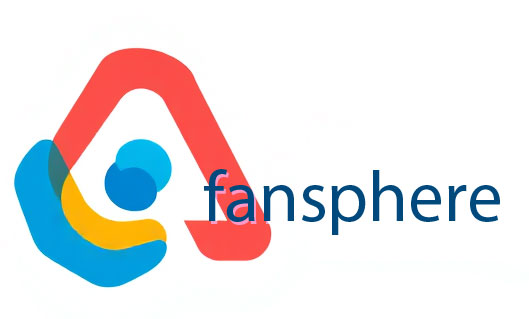Ever feel like you’ve got a pretty good grasp on the world? Think again. We’re surrounded by seemingly simple facts that, upon closer inspection, reveal surprising twists, baffling connections, and downright bizarre truths. Let’s dive into the wonderfully weird world of the unexpectedly familiar.
The Surprisingly Stretchy Truth About Rubber Bands
We all know rubber bands. They’re stretchy, they hold things together, and they sometimes snap unexpectedly. But did you know that the natural rubber from which many are made comes from the sap of a tree, the Hevea brasiliensis, a native of the Amazon rainforest? And that its elasticity is down to incredibly long, chain-like molecules that unravel and re-coil like tiny, microscopic springs? The next time you stretch a rubber band, remember the Amazonian tree that made it possible.
The Secret Life of Clouds: More Than Just Water Vapor
Clouds, fluffy and beautiful, are often thought of as simple collections of water vapor. But the reality is far more complex. Clouds are a vital part of the Earth’s climate system, reflecting sunlight, influencing rainfall patterns, and even playing a role in global temperatures. Furthermore, they’re not just water – they contain all sorts of tiny particles, dust, pollutants, even microorganisms that get carried miles in the atmosphere. Next time you see a cloud, consider the intricate dance of physics and atmospheric chemistry that created it.
The Unsung Heroes of the Ocean: The Unexpected Importance of Diatoms
You’ve probably never heard of diatoms, but these microscopic algae are the unsung heroes of our planet. These single-celled organisms are responsible for a massive chunk of the oxygen we breathe, through photosynthesis. They literally form the base of the oceanic food web, and their silica shells accumulate on the seafloor over millennia, forming diatomaceous earth – a substance used in everything from toothpaste to pool filters.
Why Do We Yawn? A Contagious Mystery
We all yawn, but why? The prevailing theory suggests yawning cools the brain, but the contagious nature of yawning adds a fascinating, and somewhat unnerving, social element. It’s thought that this contagiousness might be linked to empathy and social bonding – a way of subconsciously mirroring the behavior of those around us. Next time you stifle a yawn in a meeting, consider the complex neurobiological and social signals at play.
The Curious Case of the Placebo Effect: Mind Over Matter?
The placebo effect is more than just a “sugar pill” effect. It demonstrates the powerful influence of the mind on the body. Studies show that placebos can genuinely alleviate symptoms, even when patients know they’re inert, suggesting that our beliefs and expectations can significantly impact our physical health. The exact mechanisms behind the placebo effect are still not fully understood, but it highlights the intricate connection between our minds and bodies.
L'histoire inattendue du clavier QWERTY
The QWERTY keyboard layout, while ubiquitous, is a remarkably inefficient design. It developed in the late 19th century to prevent typewriters from jamming. Its design, intended to slow down typing (less jamming = happier typists!), is now a legacy that continues to slow down millions of typists today. A more efficient layout exists, but the legacy of QWERTY prevails for reasons far removed from its original design constraints. Quels sont les faits scientifiques étranges mais vrais ?
The Surprising Connection Between Bananas and Radioactivity
Bananas, those seemingly innocuous fruits, contain small amounts of potassium-40, a naturally occurring radioactive isotope. While the levels are harmless, it’s a reminder that radioactivity isn’t just some far-off, nuclear-related phenomenon. It’s present in the world around us, even in our everyday snacks.
The Unexpected Uses of Origami: From Art to Engineering
Origami, the Japanese art of paper folding, is more than just a pretty hobby, it’s a fascinating field of mathematics and engineering. Complex origami techniques are now being applied to design everything from airbags to deployable solar panels and architectural structures. The creative possibilities are surprisingly impactful in areas unrelated to the artistic world.
The Secret Life of Sleep: Why We Need REM
We all know we need sleep, but the purpose of REM (Rapid Eye Movement) sleep remains a fascinating area of neuroscience. While not fully understood, it’s believed crucial for memory consolidation, learning, and emotional processing. Dreams occur during REM sleep, and although their exact function is debated, they seem to play a vital role in our cognitive and emotional well-being.
The Intriguing World of Synesthesia: Mixing Senses
Synesthesia is a neurological phenomenon where stimulation of one sensory or cognitive pathway leads to automatic, involuntary experiences in a second sensory or cognitive pathway. For example, some synesthetes may see colors when hearing music or taste words. While rare, it’s a reminder of how the brain can create unexpected connections between our senses.
These are just a few glimpses into the fascinating world of the unexpectedly familiar. The world is full of surprising connections, hidden depths, and overlooked truths waiting to be discovered. Keep your curiosity alive, and you’ll be amazed by what you find.
























Ajouter un commentaire